In pictures: Nigeria festival celebrates Yoruba fertility goddess Osun Osogbo
- Published
The Osun Osogbo festival, a traditional celebration that is thought to be 600 years old, is under way in Nigeria's south-western Osun state.
The two-week festival is considered to be the biggest annual traditional religious event of the Yoruba people.
It attracts thousands of worshippers and spectators not just from Nigeria but from all over the world.

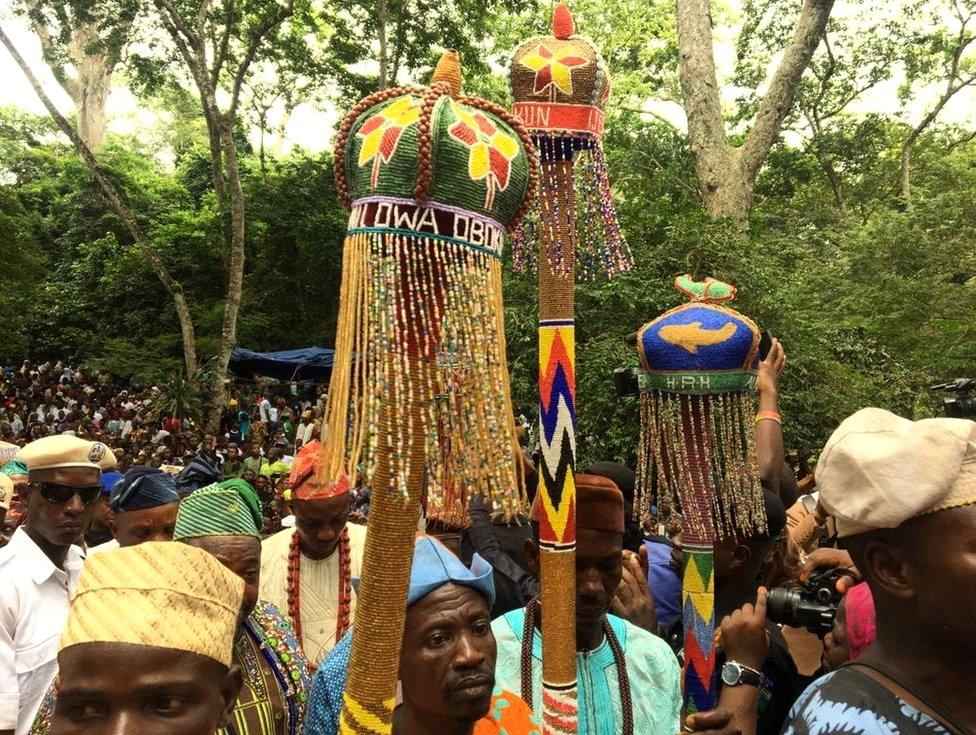

Traditional beliefs involving animist spirits are still widely held in Nigeria.
Devotees at the Osun-Osogbo festival believe that the sacred grove forest, situated on the outskirts of the city of Osogbo, is one of the last remaining places that the spirits, or "Orishas" reveal themselves to bless them.
The festival is marked with daily performances of people dancing, singing, playing the drums and showing off elaborate costumes to appease Osun, the goddess of fertility.
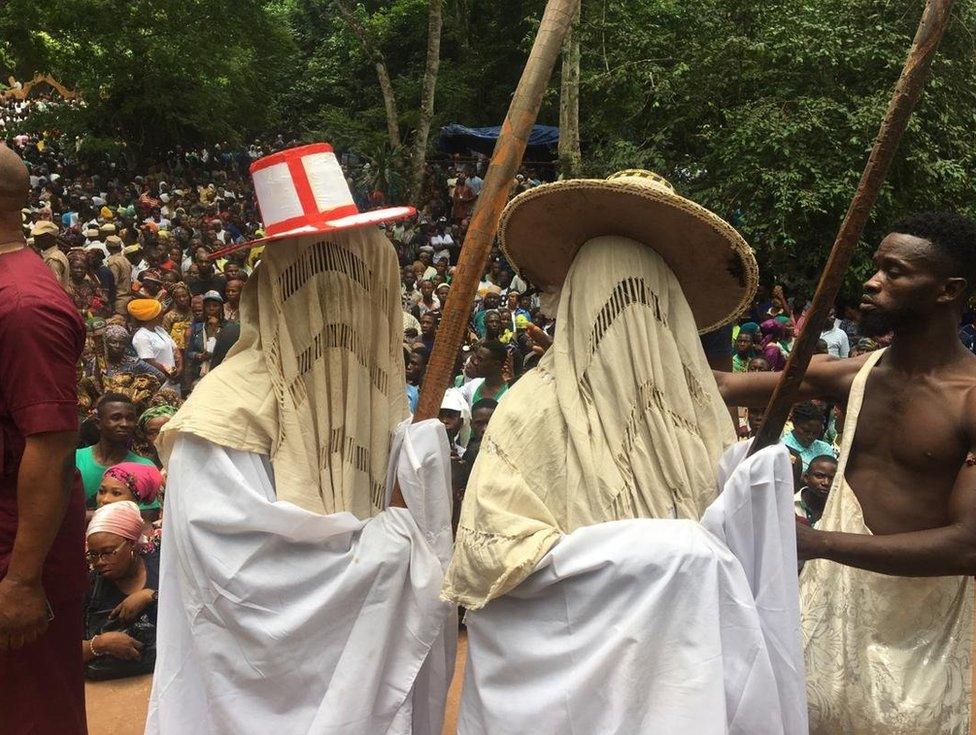

The famous Eyo masquerade performers from Lagos state have taken part in this year's festival.
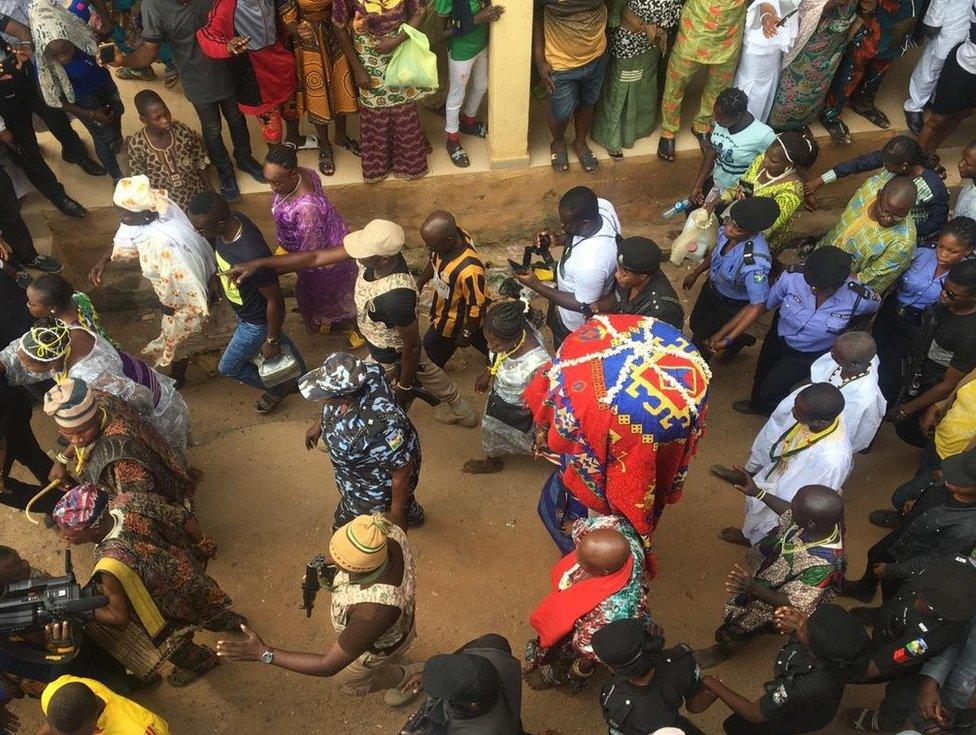

The main attraction of the festival is the Arugba, a virgin maiden who is supposed to help the people communicate with the deity, who leads a procession of devotees to offer sacrifices to the river.
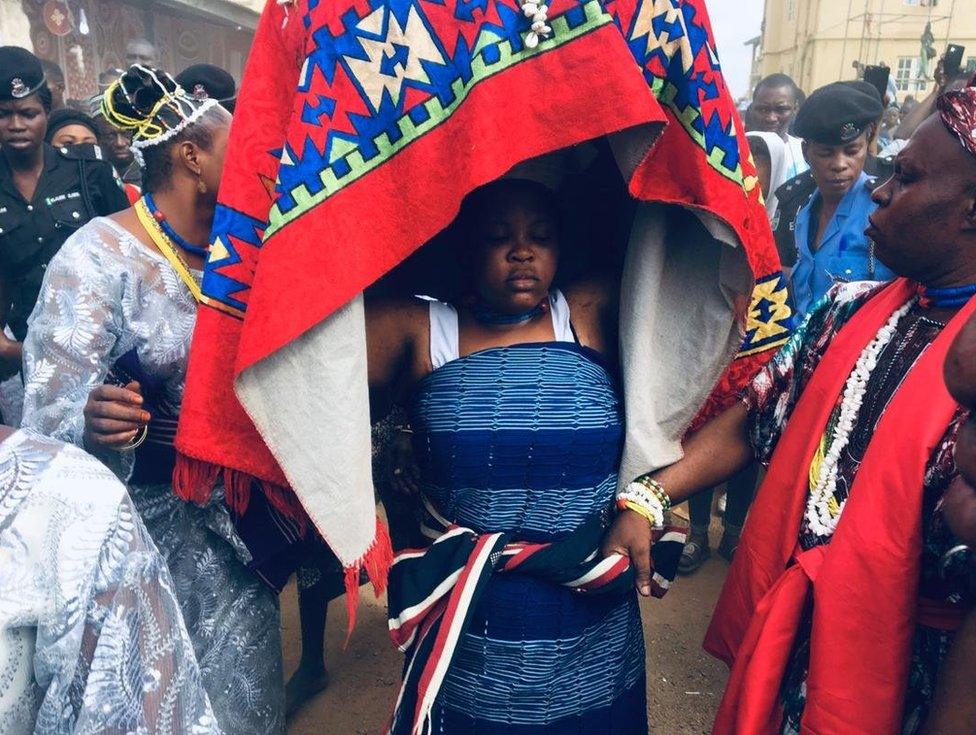

The Arugba, also known as the 'calabash carrier', has a large calabash on her head underneath a colourful veil.
It contains the sacrifices of the entire community and those offered by the people in attendance.
Every Arugba has to remain a virgin during her time in the role.

You may be interested in:

Before the procession to the river, worshippers offer prayers at the priestess' shrine.


Experts on traditional religion in Nigeria say the festival was started by the founders of the town of Osogbo around 600 years ago.
They had planned to build their houses by the river bank, but as they began felling trees, it is said the spirit of the river-god Osun called out to them, ordering them away.
The grove has been a sacred area of worship for the spirit's devotees ever since.
In 2003, the last remaining 67 acres of virgin forest in the area, was recognised by Unesco as a World Heritage Site.
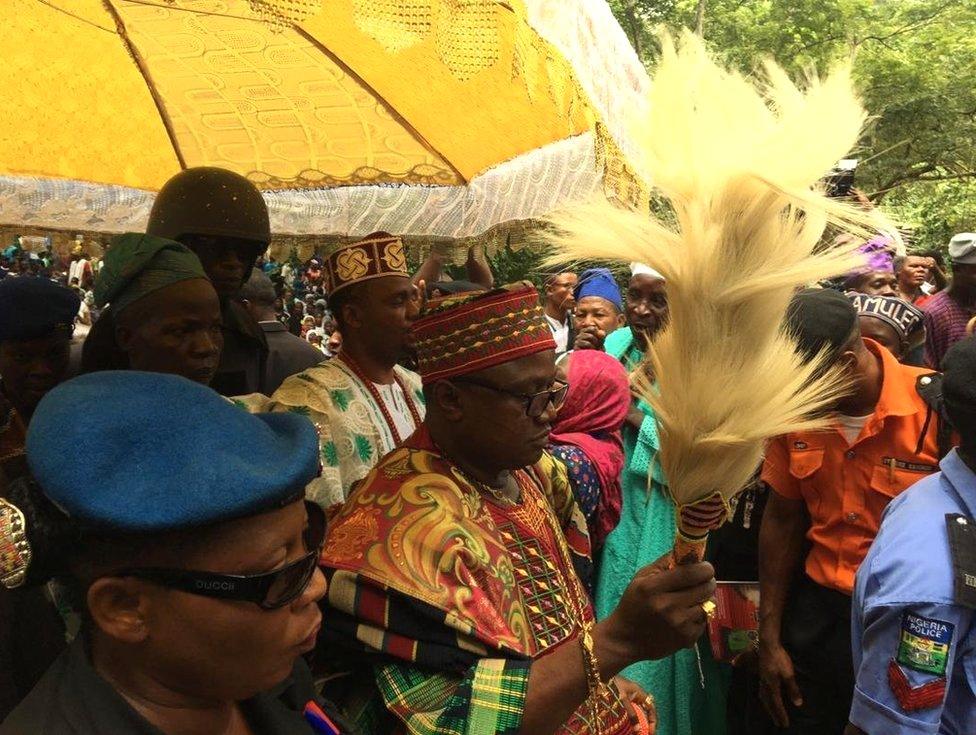

The chief host of the festival Oba Jimoh Olanipekun, whose title is Ataoja of Osogbo, also plays a major role in the event. Here he is honoured by visiting monarchs from neighbouring towns.

The festival also attracts foreigners, some of them are tourists, others are drawn by what they see as a religious and cultural connection.
"We have a large group of Orisha devotees in Slovenia and in all parts of ex-Yugoslavia, so a lot of these people came here to celebrate with the Nigerian people because we share the same culture... we all worship the nature," a worshipper from Slovenia told the BBC.
"We are thrilled about this festival and we are all getting the blessing of Osun here, from the very source of it, and we are grateful to all Nigerian people for making this place available for tourists and devotees."
Traders take advantage of the thousands of visitors to the town to sell beads and religious ornaments.
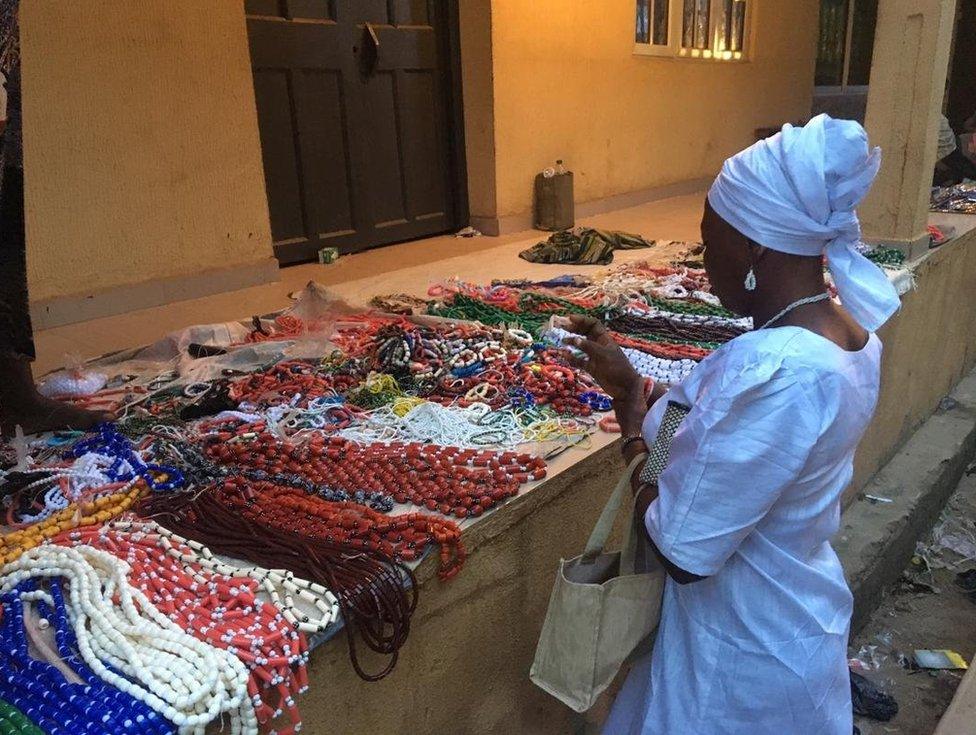
Christian missionaries had tried to stamp out animist beliefs while Nigeria was under British rule.
Rituals involved with Orisha worship at that time included human sacrifice, which was stopped by the authorities.
But since the 1980s, the festival's popularity has been growing in part because of the activism of Austrian-born artist Susanne Wenger, who rebuilt the shrines and worked to get the grove protected.
Ms Wenger arrived in Nigeria in 1950s, she later divorced her husband and resolved to stay in Osogbo for the rest of her life.
She was also known as Adunni Olorisha.
She died in 2009 aged 93.
All pictures BBC.
- Published17 January 2019
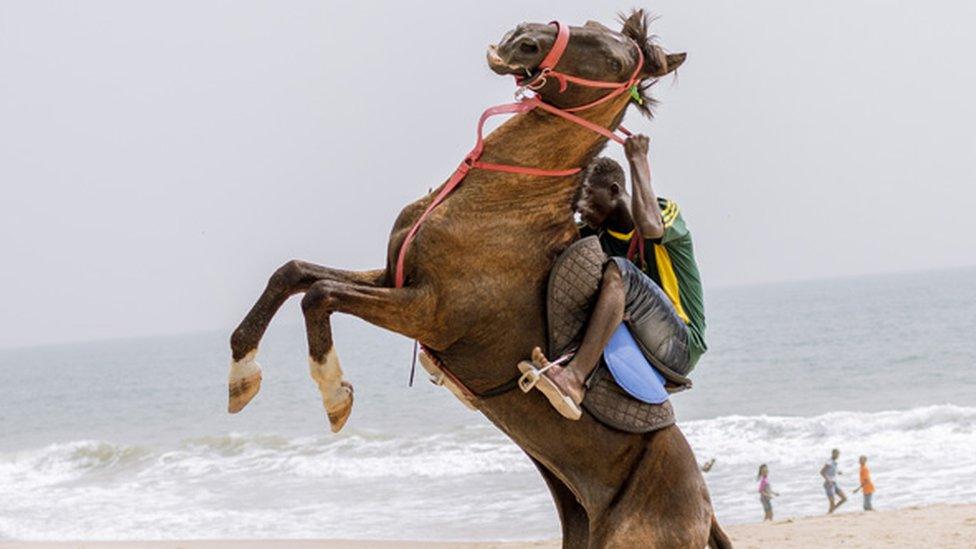
- Published24 March 2019
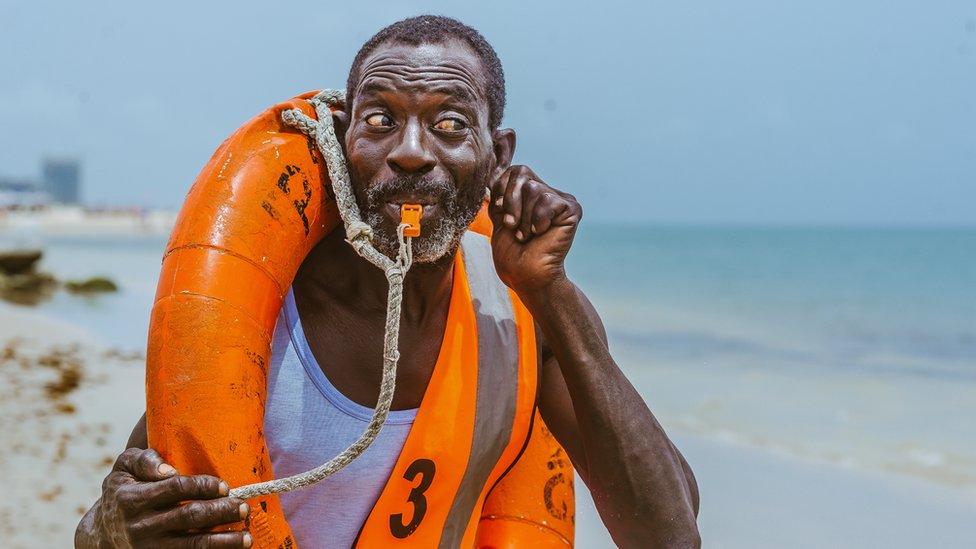
- Published22 May 2018
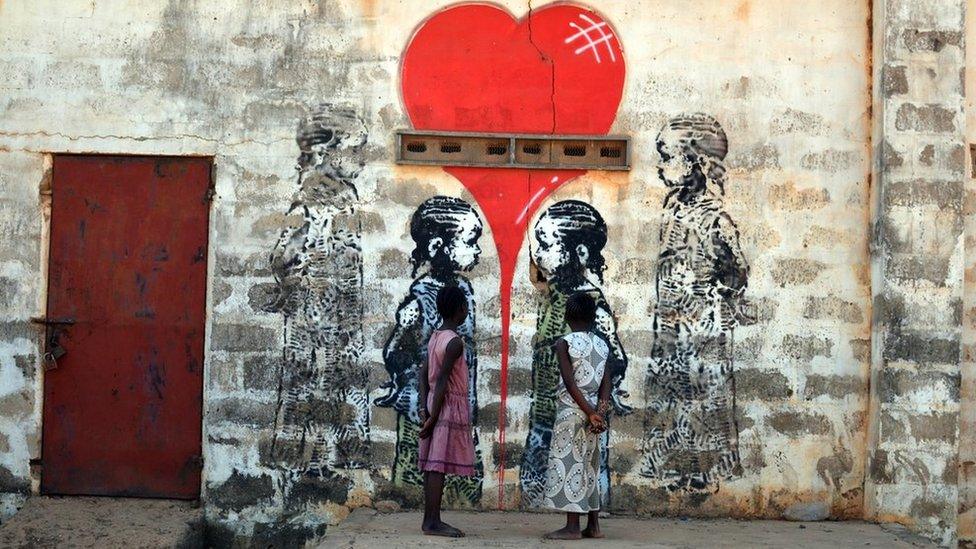
- Published29 October 2017
